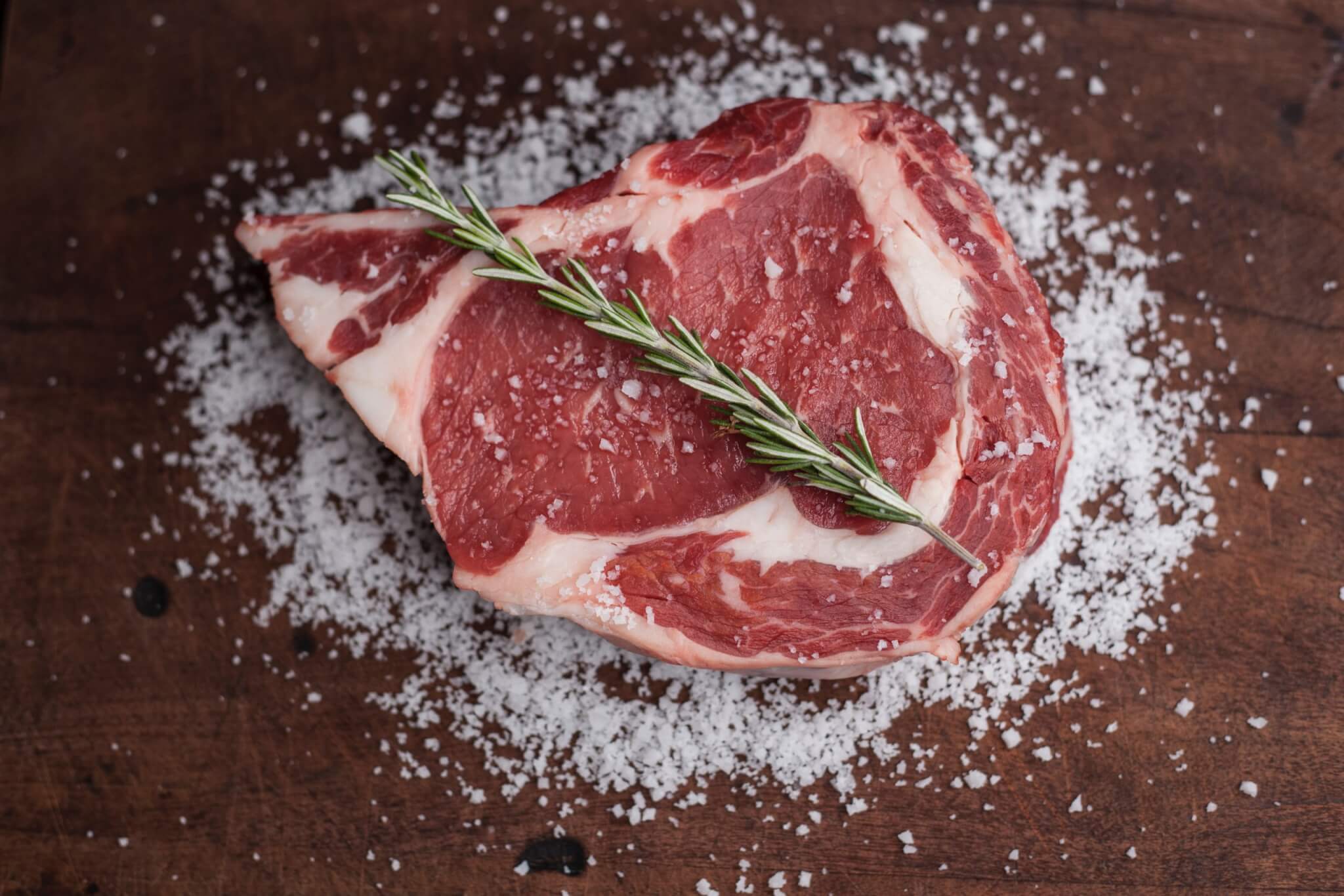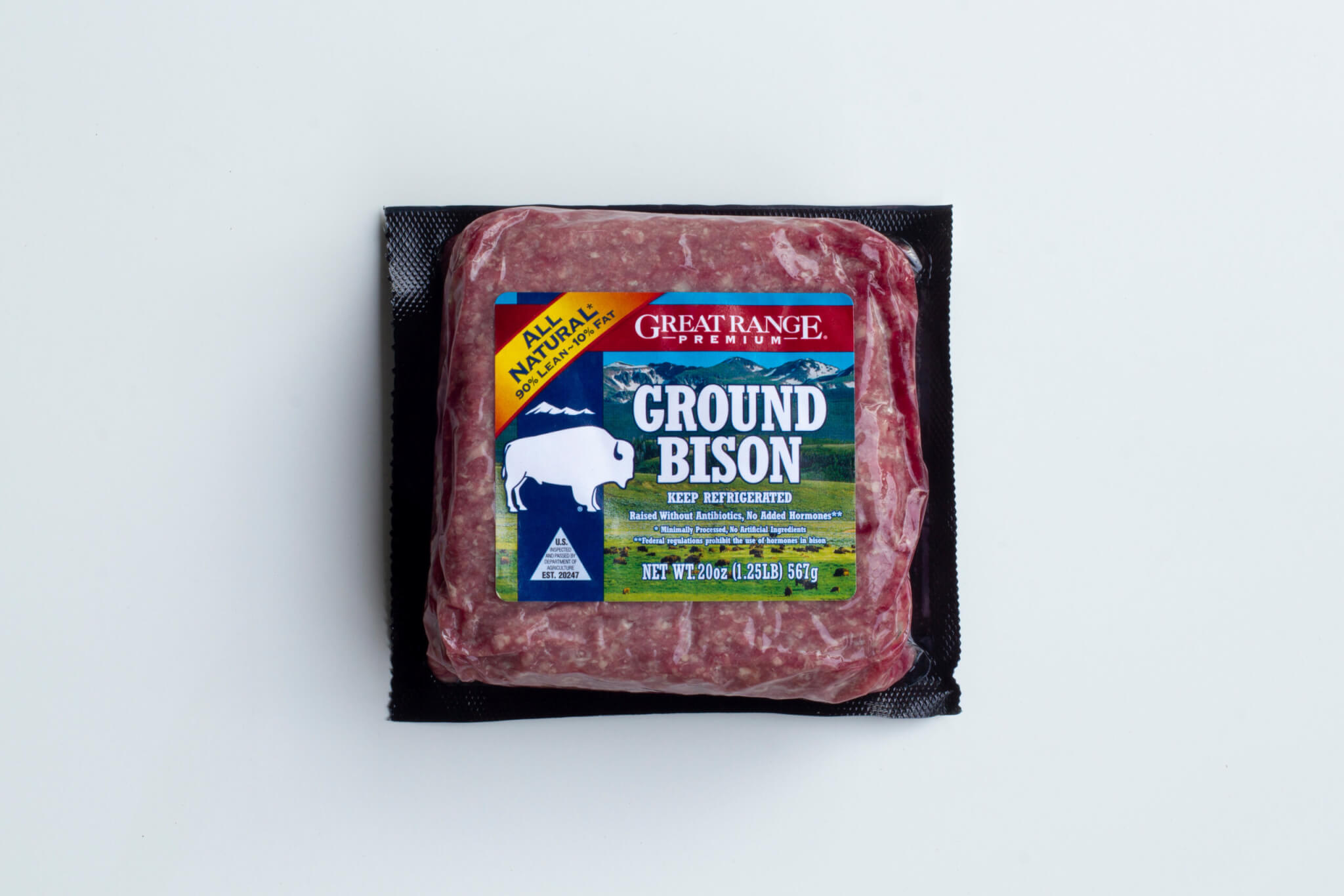We have the meats! Okay, we borrowed that from Arby’s, but seriously, we do have a whole lot of meat in this article, but not just any meat. How about the healthiest meats, according to nutrition experts?
Many people assume that plant-based meat replacements are healthier than eating the real thing, but not so fast, because researchers in Sweden report that meat alternatives like “Impossible” burgers and other plant-based substitutes lack the nutritional value of the foods they’re replacing. Their study found that meat substitutes contain proteins and nutrients that the human body can’t absorb — leaving customers with an iron deficiency. This is great news for those of us who don’t want to feel guilty for eating meat, but then there’s always the question of whether red meat is bad for us.
Research shows that red meat and processed meats like bacon and sausage can contribute to a person’s risk of having a stroke. The large-scale study concludes that red and processed meat lovers were up to 16 percent more prone to suffer a stroke.
It’s no secret that processed foods in general are unhealthy, but this research is bad news for red meat lovers. The article did also mention that eating more vegetable fat or polyunsaturated fat lowered this risk. Of course, there’s always the moderation factor as well. The study was based on eating red meat once per day, so you may want to limit your intake to one, maybe two, days per week. But we don’t claim to be medical professionals, so always consult your doctor when it comes to these types of dietary decisions.
How to Pick Quality Meat at the Store:
Along with choosing the healthiest meats, you also want to pay attention to what specific brand or cut you are choosing at the grocery store. So, we have included this guide to help guide your decisions.
- Seek the “lean”: Look for cuts labeled “lean” or “extra lean,” typically containing less than 10 grams of fat per 3-ounce serving. These include sirloin steak, pork tenderloin, and skinless chicken breast.
- Trim the fat: Don’t shy away from trimming visible fat yourself. A little extra effort can significantly reduce the saturated fat content of your chosen cut.
- Fish for health: Fatty fish like salmon, tuna, and mackerel are loaded with omega-3 fatty acids, essential for heart and brain health. Aim for two servings per week.
- Plant-based power: Don’t underestimate the protein punch of lentils, beans, and tofu. These vegetarian and vegan options are often lower in fat and cholesterol than meat.
- Grass-fed goodness: Opt for grass-fed meat whenever possible. It typically contains higher levels of omega-3s and conjugated linoleic acid (CLA), a beneficial fatty acid.
- Organic advantage: Choosing organic meat minimizes your exposure to antibiotics and hormones used in conventional farming.
Okay, no matter whether you’re a frequent or occasional meat eater, you should know which is the most nutritious so you can make informed decisions. If you’re going to eat meat, it may as well benefit your body, so let’s get to our list of the top five healthiest meats, per nutrition experts. And as always, we want to hear from you, so comment below to let us know which meat most often makes it onto your plate!
The List: Healthiest Meats, According to Experts
1. Chicken Breast
You probably guessed this one. High in protein, low in fat, chicken is a staple for many people, and it’s no surprise that chicken breast is the healthiest meat to eat. And there is an almost endless list of ways to prepare it. Let’s see why so many experts listed this as their top choice.

Insteading writes that “the humble chicken breast is one of the most popular cuts of meat in North America. It’s low in calories, low in fat, and high in protein. It’s also an incredibly versatile piece of meat. Grill it whole, dice it to use in stir fry, bake it, or poach it!” So many ways to cook it, but they also share their preferred way: “My favorite way to use chicken breasts is to cook them quickly in my Instant Pot. Once cooked, I shred the breasts and add the shredded chicken to whatever I’m cooking.”
Not just any chicken breast will be healthy. “A skinless, boneless chicken breast is one of only two land animal meat cuts considered, by the National Institute of Health, to be a ‘very lean’ source of protein,” according to January AI. And as far as nutrients: “Chicken is a great source of iron, zinc, selenium, and B vitamins.” And yes, some people do say dark meat has more flavor, but January AI recommends that “this higher-fat meat should be consumed in moderation.”
Greatist writes that “chicken is one of the most popular and versatile meats to cross the road and hop on our dinner plates. There are innumerable ways to prepare it, both simple and complex. And nothing makes for an easy but impressive dinner party meal like a whole roast chicken.”
2. Turkey Breast
It’s not just for Thanksgiving. Turkey breast is a lean, protein-packed meat for any time of year. And just like chicken breast, it’s one of the healthiest meats that you can prepare turkey breast in a variety of ways. Also, unlike eating it on Thanksgiving, it probably won’t make you quite as sleepy if you eat it without all those extra (carb-loaded) fixings.

UW Provisions favors “the rotisserie cooking method [because it] helps maximize flavor without relying on unhealthy additives. These already-lean poultry have less sodium than deli meats and chicken prepped with salt-filled sauces, blends, and rubs.” They recommend this method for both turkey and chicken.
Northwell Health recommends both turkey and chicken but gives turkey the edge in leanness: “When it comes to the healthiest meats that pack the biggest nutritional punch, turkey and chicken should be at the top of your (grocery) list, says Schiff. Both are about equal in terms of nutrition, with turkey tending to be leaner than chicken. Keep in mind poultry is healthiest if you remove the skin, which is the fattiest part.” And that last tip is key because eating either with the skin on turns a healthy meal option into an unhealthy one.
For a deep dive into the details: “The overwhelming consensus from registered dietitians is to look for lean cuts of meat. Opt for servings that deliver less than 10 grams of total fat, and 4.5 grams or less of saturated fat, which is about 3.5 ounces (think: deck of cards size),” writes The Healthy. They also share exactly why the nutrients contained in turkey are so good for you: “Turkey is one of the leaner proteins that’s also a great source of vitamin B6 and niacin, according to Sollid. These nutrients help support heart health, digestion, energy, brain function, and other bodily processes.”
3. Beef
Though most doctors and nutritionists recommend limiting red meat consumption, it is still full of beneficial proteins and nutrients. If you choose to eat red meat, experts recommend choosing lean cuts as is recommended with other meats.

Don’t be fooled. “It gets a bad rap. While it can be unhealthy to eat too much fatty red meat, lean red meat doesn’t raise your cholesterol and contains nutrients like protein, vitamin B12, iron, niacin, and zinc. Beef tenderloin is a lean, delicious — and healthy — way to go,” writes WebMD. Flank steak is another great option for a lean cut of red meat.
And in keeping with the lean meat theme, Morning Chores says that “there was a time when beef was considered to be unhealthy. Now, it is being reported that as long as the beef is lean then you are good to go.” And just a reminder from them that, “beef is not an easy meat source to raise. They require a lot of land and resources to sustain them. Keep that in mind if you are considering raising your own healthy meats.” Just in case you were considering a farm.
Ribeye steak is specifically recommended. Why? “Ribeye steak is succulent, delicious, and abundant in vital nutrients like B vitamins, zinc, and selenium. But what you won’t find listed on the package are the numerous vitalizing compounds that ribeye provides,” writes Doctor Kiltz. And the site does list quite few of those compounds. And if you wanted to live off Ribeye alone? “In fact, ribeye is so loaded in nearly all essential nutrients that you can thrive on a diet of ribeye steak, salt, and water–known as the lion diet.”
4. Fish
A well-known source of healthy fats, fish deliver beneficial doses of Omega-3s. And the good news for people that struggle with the “fishy” taste in stronger tasting fish such as salmon is that many whitefish taste mild enough to simply take on the flavor of whatever seasoning or sauce they’re topped with.

Insteading recommends canned tuna or salmon, fresh salmon, or whitefish. “Canned fish isn’t necessarily healthier than fresh or frozen filet options, but I think it’s well worth including on this list. Canned salmon or tuna are easy, convenient pantry staples that won’t spoil.” And if you’re looking to replace red meat, they say salmon will do it: “The meaty fish is a perfect option to satisfy red meat and fish eaters alike.” And when it comes to whitefish, they share that “tilapia, basa, haddock are a few of [their] favorites,” and “lightly pan-fried white fish makes great fish tacos or fish burgers.”
If you’re choosing meat based on health benefits alone, Greatist writes that “eating fatty fish, in particular, may be associated with a slew of health benefits, including lower risk of heart disease and depression, improved brain health, and lower risk of postpartum depression, to name a few.” And in addition to being healthy, fish a time saver: “One of the best parts about fish is how quick and easy it is to prepare. Brush with olive oil, season with flaky salt and pepper, and grill, roast, or broil your way to a delicious and incredibly healthy meal.”
Fox recommends eating smaller fish and being mindful of mercury: “So, how much fish can you eat and be safe? It depends. Avoid large fish that eat other fish — tuna, swordfish and shark — and stick to smaller fish, which tend to contain less mercury than bigger fish. Local levels of mercury vary; check with your nearby fish and game agency to see which fish contain high levels of mercury.”
5. Bison
Bison has become extremely popular. Though it’s not inexpensive, many people have replaced the beef in their diets with bison. It’s essentially a healthier version of beef and it has a similar flavor profile.

WebMD writes that “this is one of the leanest red meats, which makes it healthier from the start. But there’s more: Compared to beef with the same fat content, bison doesn’t make as many of the fatty plaques that can clog your arteries and lead to heart disease.” If you’re a beef lover that at the same time worries about the risks of consuming it, switching to bison may be a great option.
Research backs it up! “I was actually rather surprised by the latest studies on this meat. There was a time when buffalo was considered less healthy,” writes Morning Chores. And if you’re a burger lover: “I’m so glad that it is back to being considered healthy because some of the best burgers I have ever eaten were buffalo burgers. Just remember to keep this meat lean as well.”
Keep in mind that lean meats such as this are easily overcooked. Bison, if cooked too long will certainly dry out, leaving you with a hockey puck between your buns instead of a juicy burger.
Fox listed bison as number one on their list of the five healthiest meats. “No matter how good white meat can be it will never truly satiate the craving for red meat. Buffalo, however, can. It’s probably the reddest meat you’ll ever see and unlike beef, it’s pretty good for you. A hunk of buffalo has far less fat than steak and buffalo are generally grass-fed, which means healthier meat.” And if you want data: “Your typical lean hamburger (10 percent fat) contains about 0.32 oz (9 g) of fat. Buffalo burgers, on the other hand, contain less than half that, about 0.14 oz (4 g). Not bad for a tasty burger.”
Cooking for Health: From Farm to Flavor
Now that you are equipped with this list of the healthiest meats, here are a few tips for cooking them:
- Grilling or roasting: These methods minimize added fat and preserve nutrients. Avoid frying or pan-frying, which can increase fat content.
- Spice it up: Herbs and spices add flavor without adding calories or unhealthy fats. Experiment with different combinations to keep your meals exciting.
Bonus Tip: Remember, portion control is key! Even the healthiest meats should be enjoyed in moderation. Aim for about 3-4 ounces of protein per meal.
You might also be interested in:
- Best Ways To Cook Chicken Breasts
- Best Ways To Cook Bacon
- Best Healthy Cooking Oils
- Best Cookware Sets
- Best Air Fryers
- Best Slow Cookers
Sources:
- Oxford Academic
- WebMD
- Doctor Kiltz
- Morning Chores
- The Healthy
- Northwell Health
- UW Provisions
- Insteading
- Greatist
- January AI
- Fox
Note: This article was not paid for nor sponsored. StudyFinds is not connected to nor partnered with any of the brands mentioned and receives no compensation for its recommendations. This post may contain affiliate links.

When are we going to get off the, “Fat ,makes you fat,” lie? The human body needs data, Brain cells are made from fat. We cannot live without fat. The problem is the kind of fat. Many of our earlier studies were tainted. The mice would not eat coconut oil, for example, because it is liquid at mouse temperatures. To overcome this problem, they hydrogenated the coconut oil, thus introducing trans fats to the diet. Then, the sugar companies paid for a bogus study demonizing fat and exonerating sugar as the problem. Then there was the problem with the “7 Countries Study” by Ancell Keys that ushered in the cholesterol era on a sturdy where the counties were picked to get the results he wanted. When all available countries were included, the result went away. Then, we ignore the intake of most seed oils, like canola oil, soy oil, corn oil, etc., which are extremely harmful to the body, yet they are promoted as a healthy food compared to saturated fat in lean meat. Finally, we contaminate most modern research by mixing the results of saturated fats from meat and saturated fats from processed meats like bologna. Yes, that combination looks bad because processed foods are bad.
If you are reading this and wonder what I have been smoking, please do yourself a favor and look it all up. Just don’t look at CDC, FDA or other government websites. Neither can you ask your doctor or dietician. They will repeat the same junk as this article, eat sparingly, Choose a low-fat version, and trim off the fat. Etc. Please look at the actual research, I have. You can find help at https://pubmed.ncbi.nlm.nih.gov They catalog many articles so you can the various views and see what makes sense to you.